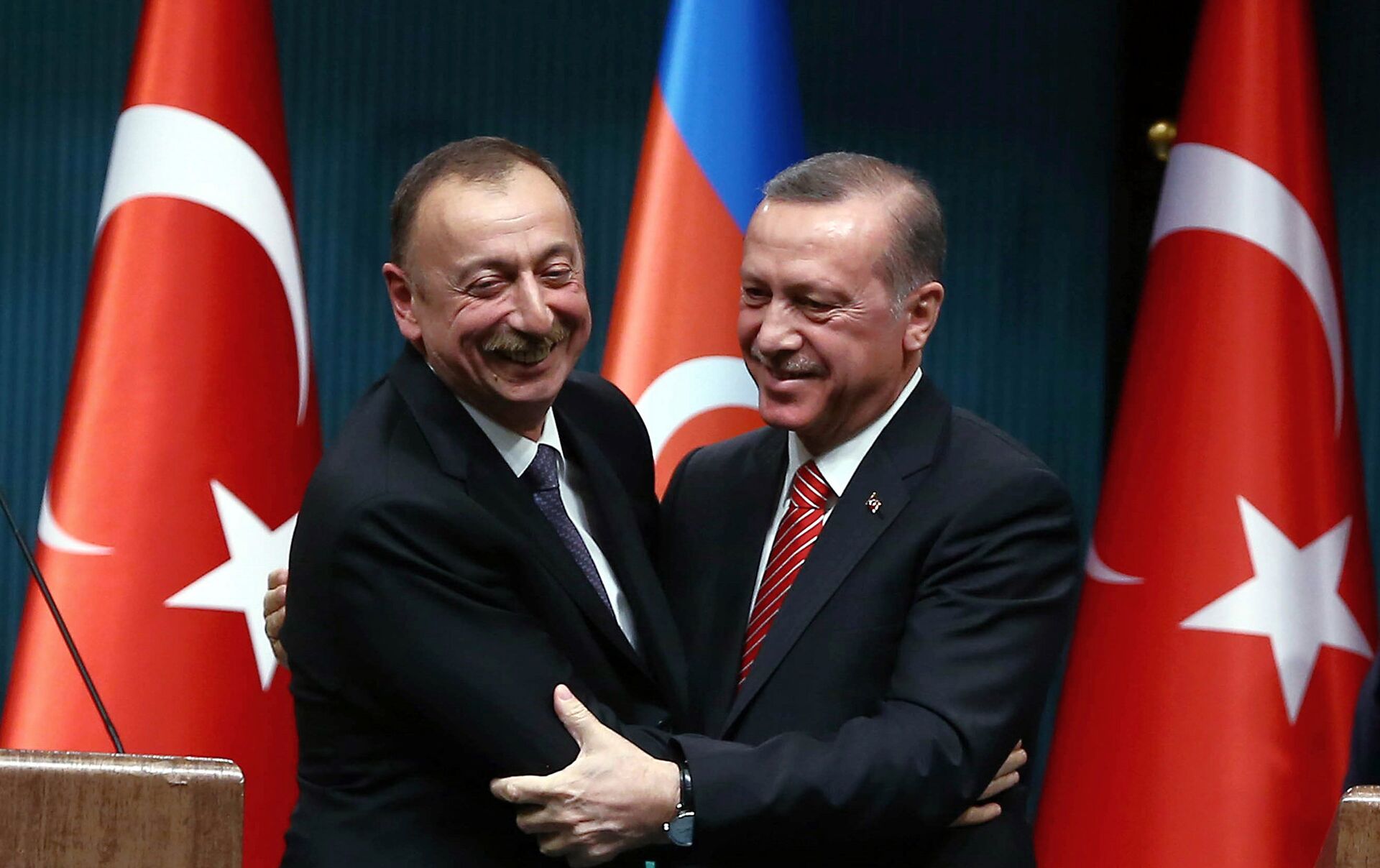Restarting after war – stories of people from both sides of the Karabakh war
Stories of post-war life
What did the 44-day war over Karabakh in September-November 2020 leave in its wake in Armenia and Azerbaijan?
How do those who suffered psychological trauma, lost their homes and relatives remember what happened?
Report from Azerbaijani outlet MeydanTV from Azerbaijan and Armenia.
“30 years ago we started life from scratch…”
On October 17, in the midst of the war, a shell hit the courtyard of the house of the Farzaliyev family: refugees from the city of Agdam who now live in the village of Yenikend in the Terter region of Azerbaijan. This is how the owner of the house, Ulduz Farzalieva, recalls the event:
“I just heard my son cry: ‘Mom, lie down!’. And when I woke up, I found myself in a trench outside the gate. My son was crying, he thought that his father was dead”.
- How can Azerbaijanis return to Khojali or Armenians to Hadrut?
- Karabakh: what awaits ‘new’ and ‘old’ refugees
It happened in the morning. The family was in the yard. Ulduz Farzalieva milked the cow, and her husband and son were waiting for her to finish:
“My husband was going to release the cattle to graze on a plot not far from the house, and my son was going to feed the calves. If my son had not heard the sound of the shell, I would have died. I don’t even remember how I ran. And what happened next, I don’t remember either. But the shell hit right in the place where I was.”
Ulduz Farzalieva thanks God that her family survived. But she says that from that day on she began to have problems with her blood pressure and heart. Moreover, her hearing deteriorated.
The Farzaliev family also suffered considerable material damage:
“The very cow that I was milking was killed by a shell. In another, the baby died in the womb. Another one was wounded and died on the way when we were taking her to the vet. We also had 17 turkeys and a dog died. The ceiling collapsed in on the house, all the windows shattered. The barn, the utility room in the yard, the things that were in it – everything was destroyed. The back wall of the house cracked, a lot of furniture and utensils broke.”
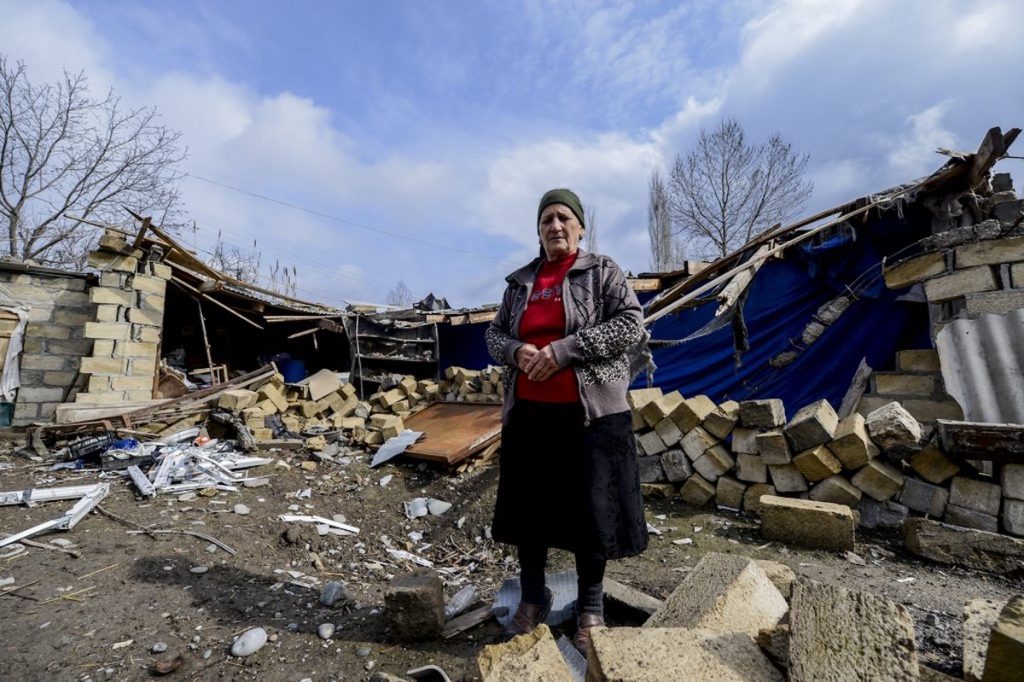
Before the war, Qazanfar Farzaliyev taught basic military training at a school in Aghdam. He says that everything was in order for them. But the war canceled all their plans, and he volunteered for the front:
“Our life has changed, we have lost everything. At the front I was wounded, then we became refugees, but, albeit with difficulty, we got back on our feet. And so, when life finally got better, the war began again. A shell hitting the house plunged us into panic and horror. Of course, at the front, I’m used to explosions and shelling, but when this happens at your home, it’s a completely different matter. I was scared that my son and wife had died. I still can’t come to my senses”.
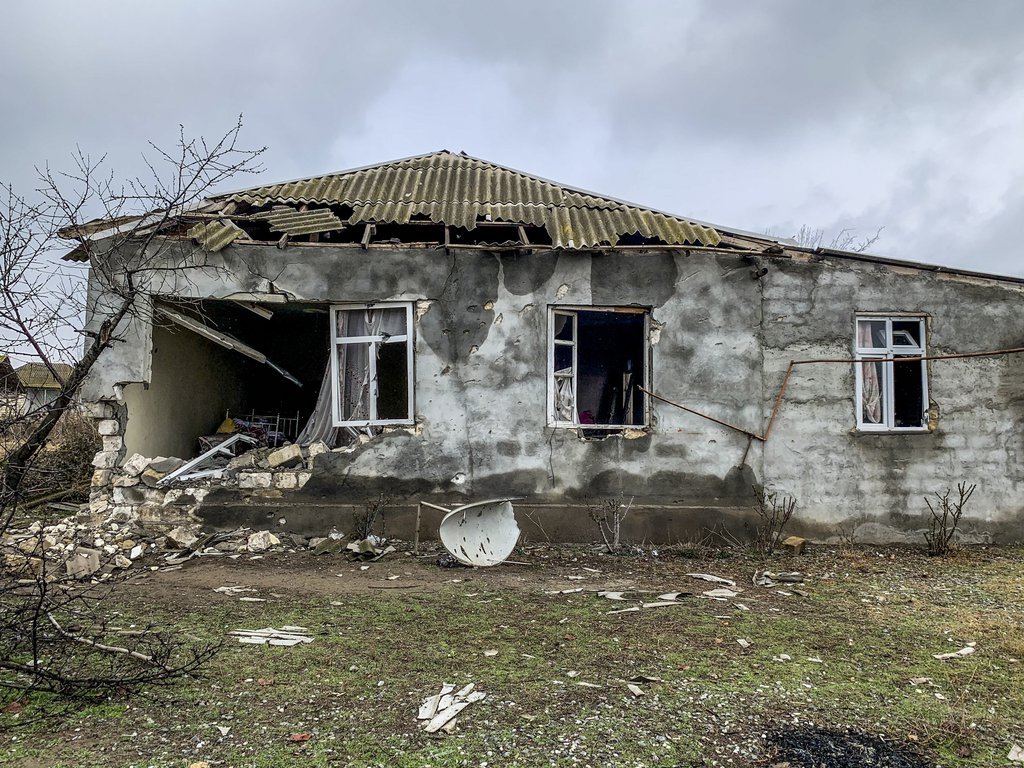
Qazanfar Farzaliev says that the second war gave him a strong sense of déja vu. He recalls how they left their home in Aghdam:
“All this again rose before my eyes. And the worst thing is that no one is interested in all our injuries and material losses. A couple of months ago, several people came. They examined the house. They took pictures, recorded something and left. Yes, they also came from the de-mining agency. They looked at the place where the shell fell. They also made notes, photographs and left. But we got no help, no compensation. We have repaired the ceiling and windows ourselves. We live in the cold and draft. And the mere sight of these ruins made it terrifying And it’s good that they fixed it, otherwise we would still live in a dilapidated house”.
According to Qazanfar Farzaliyev, he does not even receive benefits from the state as a participant in the first Karabakh war, although he has addressed this issue several times.
Disappeared kitchen
The village of Zangishali in Aghdam region also suffered from the war. The shells destroyed residential buildings. Vidadi Guliyev is the owner of one of these houses. He says that when the war began, their family moved to Guzanli for security purposes. And on October 7, a shell hit their empty house at that time. The house itself collapsed, as well as the son’s dental office attached to it:
“Half of our house is practically gone. The kitchen has disappeared altogether. The bath and toilet are completely unusable. Half a room collapsed. In general, the house is in a completely disrepair. Not a single glass was left in my son’s dental office, and expensive equipment was also damaged.”
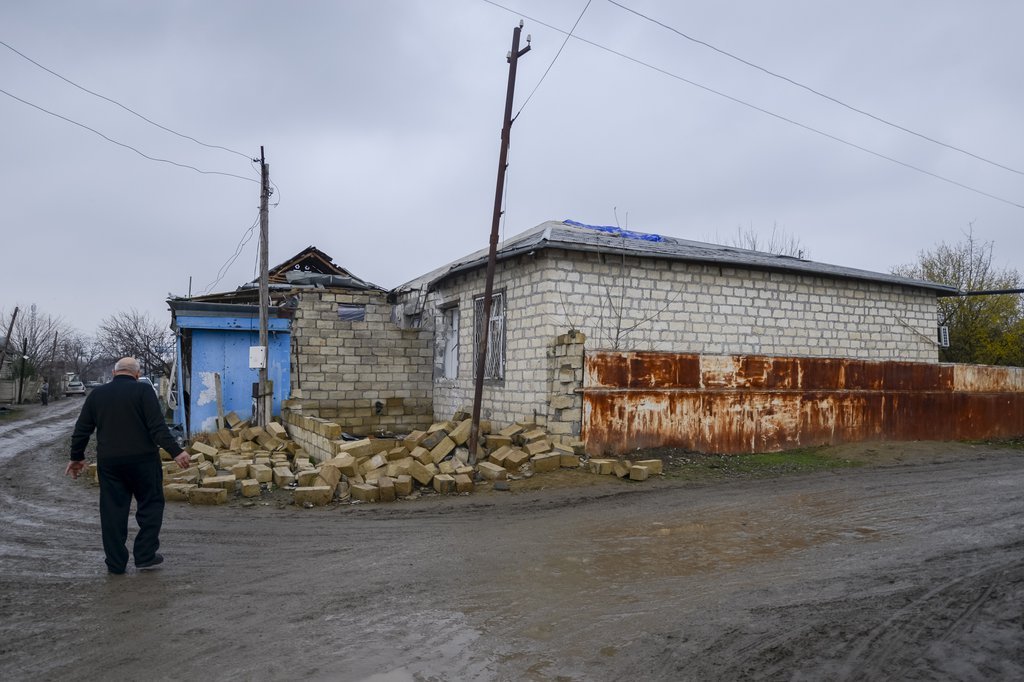
Vidadi Guliyev says that it is dangerous to live in a house in such a situation, it can collapse at any moment. Therefore, the man appealed to the executive power of Aghdam region many times. But I didn’t achieve anything:
“Several times a commission came to us, carried out an examination and left. And the last time she estimated the damage to the house and office at 800 manats. I recently renovated the house. I spent 10,000 on the kitchen alone. What 800 manat?”
Vidadi Guliyev says that he complained about the injustice to the Cabinet of Ministers, the Ministry of Economy, the Presidential Administration and local structures. However, this had no effect and no correct assessment was made.
“Hearing that the Azerbaijani army was marching, we immediately left the village”
“We hope one day to return to our village and our home.”
So says Artashes Arakelyan, a resident of the Agdere region (which the Armenians call Mardakert). At the moment, Artashes with his wife Narine and five young daughters settled in the village of Lenugi near Yerevan. The place where they live can hardly be called home. This space, which simultaneously serves as a corridor, and a kitchen, and a bedroom, was provided by their relatives.
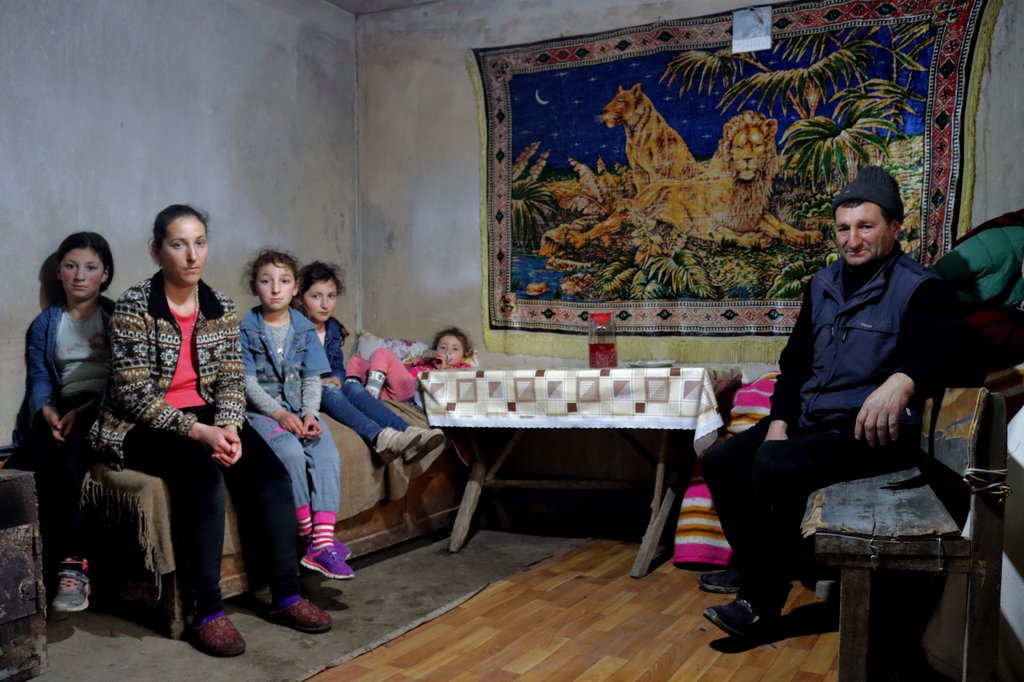
The Arakelyans are one of the refugee families. They say they left their home during the prolonged bombing of the village:
“It was impossible to stay there. All the cars in the village were without drivers, the men had gone to the front. With difficulty I found a car, took my family and went to Stepanakert (Khankendi),” says Artashes and adds that they left the village only when they heard about the approach of Azerbaijani troops. And some of their fellow villagers could not leave, and 12 people, according to him, were captured:
“As far as I know, two of them have already been extradited, and the rest are still in captivity.”
Leaving the village, Narine was able to take with her only the children’s documents and some clothes. At that moment, she had no idea that they would no longer be able to return home:
“With difficulty, we nevertheless reached Stepanakert and spent several days in the basement. The first time we got out, we tried to hail a taxi to go to Armenia, but drones were flying overhead all day and bombs were constantly falling, so we had to return to the basement,” Narine recalls.
Artashes Arakelyan, 56, was born and raised in Agdera. He participated in the First Karabakh War and lost his leg on it:
“Since then I have been wearing a prosthesis. In Agdera I had 50 cows. I was engaged in animal husbandry, this is what I fed my family.”
How he will feed his family now, after having lost everything, Artashes does not know:
“There is no work here. We want to go back to our village. This village was Armenian for decades, it is part of the Nagorno-Karabakh Autonomous Region. Even the graves of my great-grandfathers are there ”.
The only thing the Arakelyans hope for is that some miracle will return them home.
“We don’t want war,” Narine looks at the children and continues:
“I don’t want them, like us, to witness another war. I hope we will be able to achieve something through negotiations. ”
Unlike the Arakelyans, thousands of other families have found shelter in hotels, schools and kindergartens, which have opened their doors for them.
“The second time I lose my home”
Gulnara Stepanyan is a refugee from Hadrut (Agoglan). Since October last year, she and her family have been living in a kindergarten building in the village of Arshalus in Armenia. They left the village of Tumi when Azerbaijani troops entered it:
“This is my second time losing my home. This happened for the first time in 1992, when we had to leave Mardakert (Agdere). My parents were from Hadrut, so we settled there ”.
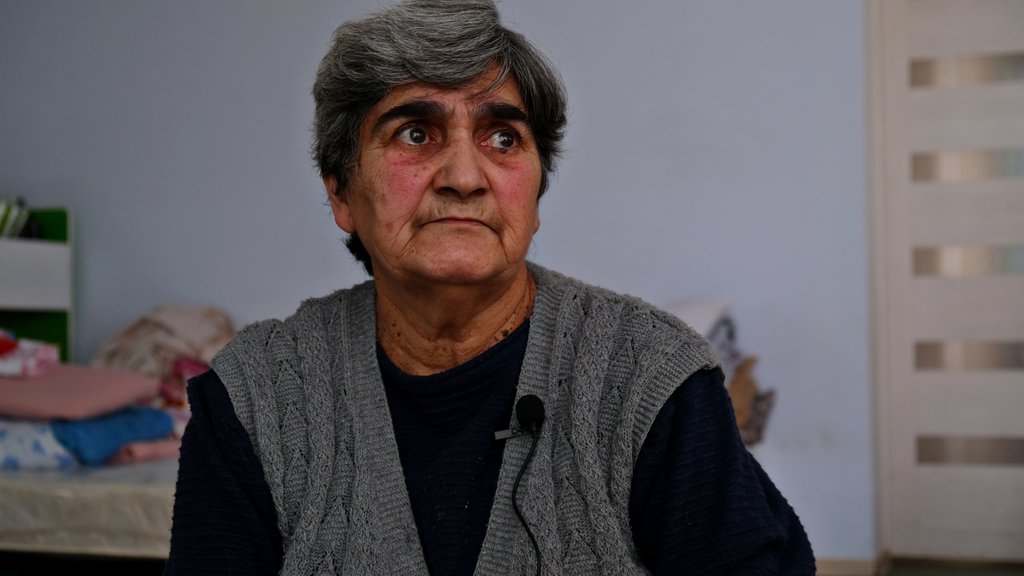
At the moment, Gulnara lives in a kindergarten with her son, daughter-in-law and five grandchildren.
The Armenian government and several foundations provided the refugees with food and some basic necessities. But neither help nor shelter can replace their homes with them:
“How long are we going to live like this?” – Gulnara’s daughter-in-law Anush Stepanyan asks. Her two daughters were born last August, shortly before the war. Anush finds parallels between her own childhood and what her children are experiencing now:
“When in the 90s my mother left Mardakert (Agdere) together with my face, I was one month old. And so, history repeats itself – when I left Hadrut with my daughters, they were also a month old. “
Gulnara Stepanyan is waiting for a food package.
Photo: Meydan TV
Their family’s source of income in Hadrut was land and cows. How their life will turn out now is unknown.
School # 2 in the city of Gyumri has also turned into a refuge for Karabakh refugees. Since October 2, this school has accepted 300 students. But now only 12 families, 48 people are left here.










